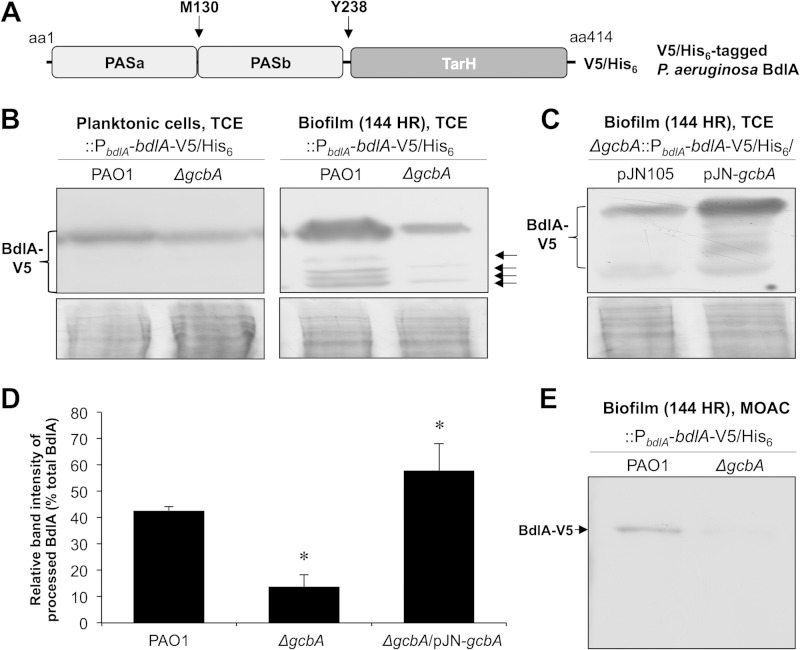FIG 1.
The DGC GcbA is required for cleavage of BdlA during biofilm growth. (A) Domain structure of BdlA. TarH, conserved chemoreceptor domain found in Tar (taxis toward aspartate and related amino acids); PAS, Per-Arnt-Sim sensory domain. Arrows indicate the methionine-130 (M130) putative ClpP cleavage site and tyrosine-238 (Y238) phosphorylation site. V5/His6 indicates the C-terminal location of the V5 epitope–6-histidine tag of the BdlA construct used in this study. (B) Detection with anti-V5 antibody of chromosomally encoded C-terminally V5/His6-tagged BdlA in total cell extracts (TCE) of planktonic or biofilm (144-h-old) wild-type PAO1 or ΔgcbA mutant cells. Arrows indicate detected cleavage products of BdlA. (C) Detection with anti-V5 antibody of chromosomally encoded C-terminally V5/His6-tagged BdlA in total cell extracts of 144-h-old biofilm ΔgcbA mutant cells harboring arabinose-inducible gcbA in the pJN105 vector or the empty vector control. Panels below immunoblot images (B and C) are Coomassie-stained gels after transfer to ensure equal TCE protein loading. (D) ImageJ software densitometry analysis was used to determine the relative fraction of processed BdlA, reported as percentage of band intensity of processed BdlA relative to intensity of all detectable BdlA bands. Error bars represent standard deviations. *, significantly different from the results for PAO1 cells (P < 0.05). (E) Detection with anti-V5 antibody of chromosomally encoded C-terminally V5/His6-tagged BdlA in metal oxide chromatography (MOAC)-enriched phosphoproteomes of biofilm (144-h-old) wild-type PAO1 or ΔgcbA mutant cells. All experiments were performed in triplicate. Representative images are shown.

